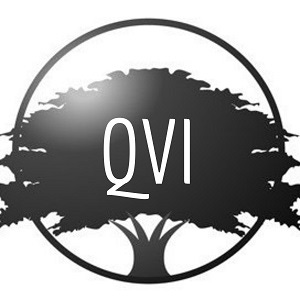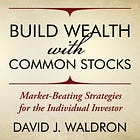
Summary
Walt Disney is a non-dividend-paying large-cap stock in the communications services sector’s movies and entertainment industry.
Disney offers film and episodic television content, theme parks and resorts, and licenses its intellectual property.
The company’s performance, and thus its stock price, underperformed the sector and market since the pandemic after an 8-bagger total return in our family portfolio since inception in 2009.
In this updated research report, QVI reiterates its rating on the stock in the Concentrated Portfolio.
When referencing this report, premium (paying) subscribers can access their Quality Value Investing (QVI) Glossary of Investing Terms and Metric Targets. Unless noted, all data presented is sourced from Seeking Alpha Premium as of the market close on August 10, 2023, and intended for illustration only. If reading this in your email, consider viewing in the Substack App for a more inclusive experience.
Walt Disney Value Proposition
QVI Research Report’s value proposition section provides a brief synopsis of the company’s business model, major-exchange listing, stock symbol, market capitalization, and dividend-paying status. In addition, it defines the competitive advantages of a company’s products or services to its customers compared to the industry, including the stock’s historical performance vs. the sector and market.
The Walt Disney Company DIS 0.00%↑is a non-dividend-paying large-cap stock in the communications services sector’s movies and entertainment industry. DIS was added to our family portfolio, as illustrated in the QVI Concentrated Portfolio on June 15, 2009, as a then dividend-paying stock at an adjusted $20.88 a share.
The Walt Disney Company and its subsidiaries operate as an entertainment company worldwide. It operates through two segments: Disney Media and Entertainment Distribution; and Disney Parks, Experiences and Products.
The company engages in film and episodic television content production and distribution activities, as well as operates television networks under the ABC, Disney, ESPN, Freeform, FX, Fox, National Geographic, and Star brands and studios that produce films under the Walt Disney Pictures, Twentieth Century Studios, Marvel, Lucasfilm, Pixar, and Searchlight Pictures banners. It also offers direct-to-consumer streaming services through Disney+, Disney+ Hotstar, ESPN+, Hulu, and Star+; sale/licensing of film and television content to third-party television and subscription video-on-demand services; theatrical, home entertainment, and music distribution services; staging and licensing of live entertainment events; and post-production services by Industrial Light & Magic and Skywalker Sound.
In addition, the company operates theme parks and resorts, such as Walt Disney World Resort in Florida; Disneyland Resort in California; Disneyland Paris; Hong Kong Disneyland Resort; and Shanghai Disney Resort; Disney Cruise Line, Disney Vacation Club, National Geographic Expeditions, and Adventures by Disney, as well as Aulani, a Disney resort and spa in Hawaii.
Further, it licenses its intellectual property to a third party for the operations of the Tokyo Disney Resort and consumer products, including licensing of trade names, characters, visual, literary, and other IP for use on merchandise, published materials, and games; operates a direct-to-home satellite distribution platform; sells branded merchandise through retail, online, and wholesale businesses; and develops and publishes books, comic books, and magazines.
The Walt Disney Company was founded in 1923 and is based in Burbank, California, USA.
QVI’s value proposition elevator pitch for Walt Disney:
The reigning original content king in film, television, and themed resort entertainment.
Performance vs. Sector and Market
The chart below illustrates DIS’s performance against the Communications Services Select Sector SPDR® Fund ETF (NYSE: XLC) and the SPDR® S&P 500 ETF Trust (NYSE: SPY) since being added to the QVI Portfolios in June 2009.
For example, DIS has underperformed its sector since its inception in 2018 and the broader market after outperforming it during most of QVI’s coverage timeframe. The fall-off was primarily due to Disney’s widely reported challenges with movie theater and theme park attendance during the coronavirus pandemic and challenges meeting Wall Street’s dubious expectations for its streaming business subscriber growth.
Due Diligence Resources
For a more in-depth analysis of the all-important value proposition, visit Walt Disney’s investor relations webpage and its most recent Form 10-K Annual Report submitted to the US Securities and Exchange Commission or SEC.
QVI’s value proposition rating for Walt Disney: Bullish.
DIS Total Return vs. XLC (and SPY) The Walt Disney Co (DIS) Total Return: -15.96% Communications Services Sel Sec SPDR ETF (XLC) TR: +40.65% SPDR S&P 500 ETF Trust (SPY) Total Return: +75.50% Since XLC inception on June 18, 2018 (as of August 10, 2023) DIS Total Return vs. SPY The Walt Disney Co (DIS) Total Return: +318.18% SPDR S&P 500 ETF Trust (SPY) TR: +529.70% Since June 15, 2009 (as of August 10, 2023)
DIS Shareholder Yields
QVI Research Report’s shareholder yields section uncovers the equity bond rate of the company’s common shares. It aims to quantify the yields on earnings, free cash flow, and dividends to measure how the targeted stock compares to the prevailing yield on the 10-Year Treasury benchmark note.
Earnings and Free Cash Flow Yields
DIS’s earnings yield traded below the QVI targeted floor at 2.45%, as demonstrated in the chart below. In addition, at 0.83%, DIS’s free cash flow yield traded well under the threshold.
As inverse valuation multiples, the weighted shareholder yields suggest that DIS trades at a premium to earnings and free cash flow. QVI will further explore valuation multiples later in this report.
Dividend Yield
The Walt Disney Company has ceased paying a dividend since the COVID-19 pandemic.
Average of Shareholder Yields
Quality Value Investing takes the average of the three shareholder yields to measure how the stock compares to the prevailing yield of 4.11% on the 10-Year Treasury benchmark note. For example, the average shareholder yield for DIS was 1.09% or -302 bps below the intermediate government bond yield.
QVI’s shareholder yields rating for DIS: Bearish.
DIS Shareholder Yields
The Walt Disney Co (DIS) Price: $91.73
The Walt Disney Co (DIS) Earnings Yield: 2.45%
The Walt Disney Co (DIS) Free Cash Flow Yield: 0.83%
The Walt Disney Co (DIS) Dividend Yield: 0.00%
One-Year Trailing (as of August 10, 2023)Walt Disney Fundamentals
QVI Research Report's fundamentals section measures the performance strength of the company's senior management by analyzing revenue growth, net profit margin, and returns on equity and invested capital.
Revenue Growth and Net Profit Margin
Per the chart below, Walt Disney had a positive three-year annualized double-digit revenue growth of 13.33%, outperforming the 3.82% median growth of the communications services sector.
Farther down the income statement, Walt Disney had a trailing three-year mid-single-digit net profit margin of 4.74%, in line with the sector's median net margin of 3.60%
Returns on Equity and Invested Capital
Walt Disney's management produced a trailing three-year return on equity or ROE of 4.36%, well under QVI's targeted threshold but in line with the sector's median ROE of 3.29%.
Stock buyback programs often elevate ROE. Notably, Walt Disney's board of directors halted its share repurchase program in August 2018 because of debt from acquiring 20th Century Studios and television assets from News Corporation's Fox.
At 2.62%, Walt Disney's three-year return on invested capital, or ROIC, was well below the QVI threshold yet in line with the sector's median ROIC of 3.57%, indicating that its senior executives are competitive capital allocators.
Nevertheless, Walt Disney's ROIC didn't cover its weighted average cost of capital, or WACC, of 10.33%. (Source of WACC: GuruFocus).
Positive double-digit revenue growth, tempered by low yet sector-competitive profit margins and returns on equity and invested capital, suggests that Walt Disney's management continues its turnaround from the pandemic's adverse effects on its operations.
QVI's fundamentals rating for Walt Disney: Neutral.
DIS Returns on Management
The Walt Disney Co (DIS) Revenue Growth: 13.33%
The Walt Disney Co (DIS) Profit Margin: 4.74%
The Walt Disney Co (DIS) Return on Equity: 4.36%
The Walt Disney Co (DIS) Return on Invested Capital: 2.62%
Three-Year Trailing (as of August 10, 2023)DIS Valuation, Risks, and Investment Thesis
Next, QVI dives into the valuation multiples, downside risks, and overall investment thesis of The Walt Disney Co. (DIS), including potential catalysts. So, let’s dig further after reading the required disclosures and background information.
Disclosure: I/we have a beneficial long position through the direct ownership of common shares of DIS in our family portfolio. I wrote this report myself, and it expresses my own opinions. I am not receiving compensation for it other than from Substack paid subscriptions. I have no business relationship with any company whose stock is mentioned in this article.
Additional Disclosure: Quality Value Investing by David J. Waldron’s primary ticker research reports are for informational purposes only. The accuracy of the data cannot be guaranteed. Narrative and analytics are impersonal, i.e., not tailored to individual needs nor intended for portfolio construction beyond his family portfolio, which is presented solely for educational purposes. David is an individual investor and author, not an investment adviser. Readers should always engage in their own research or due diligence and consider (as appropriate) consulting a fee-only certified financial planner, licensed discount broker/dealer, flat fee registered investment adviser, certified public accountant, or specialized attorney before making any investment, income tax, or estate planning decisions.
About the Writer
David J. Waldron is the contributing editor of Quality Value Investing and author of the international-selling book Build Wealth with Common Stocks: Market-Beating Strategies for the Individual Investor. David’s mission is to inspire the achievement of his readers’ financial goals and dreams. His work has been featured on Seeking Alpha, TalkMarkets, ValueWalk, MSN Money, Yahoo Finance, QAV (Australia’s #1 Value Investing Podcast), Money Life with Chuck Jaffe, LifeBlood with George Grombacher, The Acquirer’s Multiple, Amazon.com, Barnes & Noble, Apple Books, the BookLife Prize, and Publisher’s Weekly. David received a Bachelor of Science in business studies as a Garden State Scholar at Stockton University and completed The Practice of Management Program at Brown University.
Bonus: Founding Subscribers of QVI on Substack are eligible to receive a personalized complimentary copy of the case laminate hardcover edition of the book from the author.
DIS Valuation Multiples
Keep reading with a 7-day free trial
Subscribe to Quality Value Investing to keep reading this post and get 7 days of free access to the full post archives.





